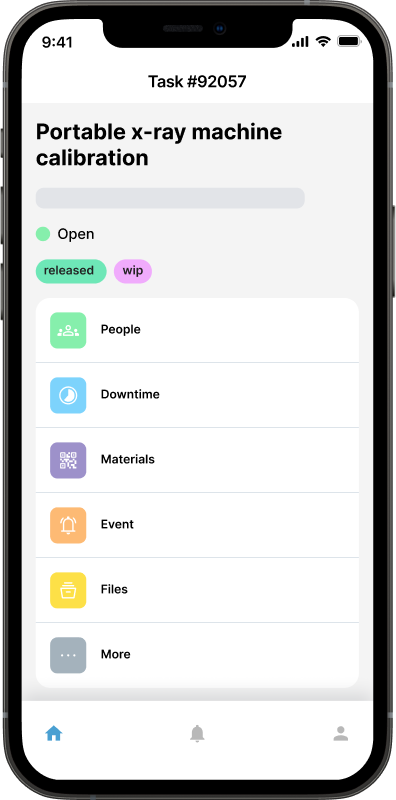Maintenance Management for Small and Medium-sized Businesses: Top 10 Strategies

Maintenance Management Efficiency
Efficient maintenance management is a critical aspect of ensuring the smooth operation of small and medium-sized businesses (SMEs). For many SMEs, the shift from reactive to proactive maintenance practices is a key step in minimizing downtime, reducing operational costs, and extending the lifespan of assets. In this blog, we will explore the top 10 strategies that small and medium-sized businesses can implement to enhance their efficiency in maintenance management, moving away from the reliance on reactive and unplanned maintenance.
1. Implement a Computerized Maintenance Management System (CMMS)
The foundation of efficient maintenance management lies in leveraging technology. Implementing a CMMS is a game-changer for SMEs, providing a centralized platform to streamline work order management, preventive maintenance scheduling, and asset tracking. A CMMS facilitates proactive maintenance planning, allowing businesses to stay ahead of potential issues and minimize unplanned downtime.
2. Prioritize Preventive Maintenance
Embracing preventive maintenance is crucial for SMEs looking to reduce reliance on reactive measures. Establishing a preventive maintenance program ensures regular inspections, lubrication, and component replacements, addressing potential issues before they escalate into costly breakdowns. This strategy not only minimizes downtime but also extends the lifespan of critical assets.
3. Develop Standard Operating Procedures (SOPs)
Clear and concise standard operating procedures are fundamental to efficient maintenance management. Documenting step-by-step processes for routine tasks, inspections, and troubleshooting enables maintenance teams to work consistently and reduces the likelihood of errors. SOPs serve as a valuable resource for training new staff and maintaining a standardized approach to maintenance activities.
4. Invest in Employee Training and Development
Well-trained and skilled maintenance personnel are key to proactive maintenance practices. Investing in ongoing training programs ensures that staff members are proficient in the use of CMMS software, familiar with preventive maintenance protocols, and equipped to handle advanced maintenance tasks. Continuous development empowers employees to contribute to the efficiency and effectiveness of maintenance operations.
5. Utilize Key Performance Indicators (KPIs)
Implementing KPIs provides SMEs with measurable metrics to assess the performance of maintenance operations. Tracking metrics such as equipment uptime, mean time between failures (MTBF), and mean time to repair (MTTR) allows businesses to identify trends, measure the success of preventive measures, and make data-driven decisions for continuous improvement.
6.Optimize Inventory Management
Efficient inventory management is crucial for minimizing downtime caused by delayed parts procurement. SMEs should establish an organized system for tracking and replenishing spare parts. A well-maintained inventory ensures that necessary components are readily available, reducing the time required for repairs and preventing extended equipment downtime.
7. Embrace Predictive Maintenance Technologies
Integrating predictive maintenance technologies, such as sensors and condition monitoring, enhances the ability to foresee equipment failures before they occur. By monitoring equipment health in real-time, SMEs can identify anomalies, plan targeted maintenance interventions, and avoid unexpected breakdowns.
8. Implement Root Cause Analysis
Conducting thorough root cause analysis for equipment failures is essential for breaking the cycle of reactive maintenance. Understanding the underlying reasons for failures allows SMEs to address issues at their source, preventing recurring problems and fostering a culture of continuous improvement.
9. Foster a Culture of Proactive Communication

Open communication between maintenance teams, operations, and management is vital for proactive maintenance management. Encouraging teams to share observations, report issues promptly, and collaborate on improvement initiatives ensures that potential problems are identified and addressed in a timely manner.
10. Regularly Review and Update Maintenance Strategies
The business environment and operational needs evolve over time, and maintenance strategies should adapt accordingly. Regularly reviewing and updating maintenance plans ensures that they remain aligned with organizational goals, industry best practices, and the latest technological advancements, helping SMEs stay ahead in the dynamic landscape of maintenance management.
The path to efficient maintenance management for small and medium-sized businesses involves a strategic blend of technology adoption, preventive practices, employee empowerment, and continuous improvement. By implementing these top 10 strategies, SMEs can transition from a reactive approach to a proactive maintenance model, reducing downtime, optimizing resources, and ensuring the long-term health of their assets. In an ever-evolving business landscape, embracing efficiency in maintenance management becomes a key differentiator for SMEs striving for sustainable growth and operational excellence.

